Homer (thought to have been born in Chios c. 750 BCE is perhaps the greatest of all epic poets and his legendary status was well established by the time of Classical Athens.He composed (not wrote, since the poems were created and transmitted orally, they were not written down until much later) two major works, the Iliad and the Odyssey; other works were attributed to Homer, but even in antiquity their authorship was disputed.
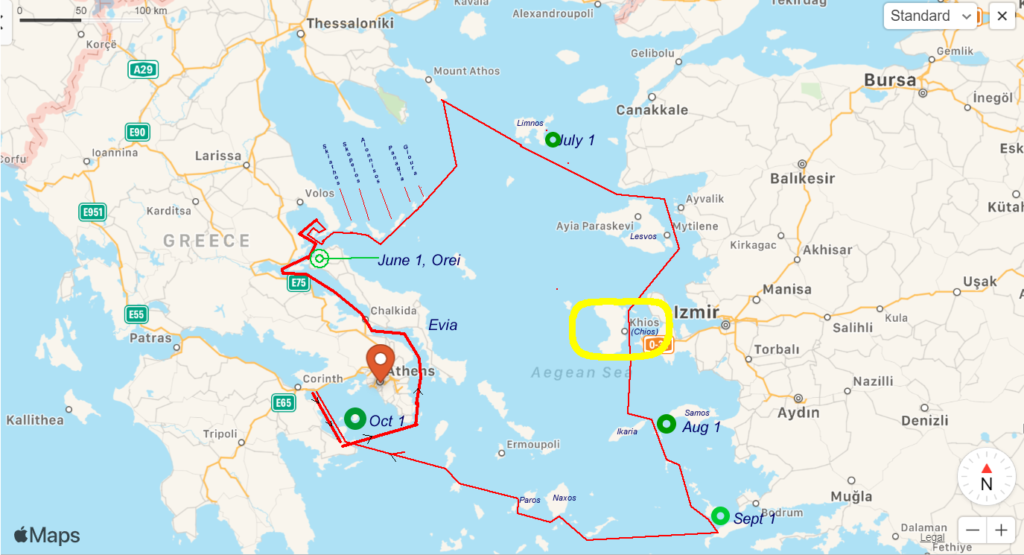
Chios was the departure point for Michael, Christine and Samantha. We had a brisk and enjoyable sail south from Lesvos to Chios and tied up in a disused marina just north of the main port. Fifteen years ago a marina was constructed – all the concrete works, bollards etc were finished just before the GFC hit Greece. The owners were unable to either complete it or sell it so abandoned the site. Now 15 years later it is a well known stopping point for cruising yachts to Chios looking for a safe place to moor up at no cost. No power or water – but completely free!
Turkey Side Trip
With the departure of Mike, Christine and Samantha we decided to have a side trip to visit Turkey. Ferry tickets were purchased for the 45 minute ferry ride from Chios (Greece) to Cesme (Turkey), then a 90km bus ride to the city of Izmir to our hotel for a night. We visited the Izmir Kemeralti Han Baazar and marketplace which was loud, colourful and maze-like. Like Paddys market on steroids you plunge into the forking passages of the crowded bazaar. Obviously wedding gowns are in high demand with hundreds on show – some traditionally Turkish bejeweled and glittering – others more like traditional European dress styles. Cookware, rugs, leather goods, ceramics, silverware, brass lanterns, tea glasses, trinkets and more all fought to entice you to part with your money. This 16th-century stone covered complex is a little brother to the Grand Bazaar in Istanbul. The central area is a huge food court with the best turkish food at very reasonable prices eaten in the dense shade of some very old trees. We managed to get lost several times but it was fun.
Back on Chios the next morning started when we were woken by huge ferries parked off the next bay hooting their horns robustly and continuously to celebrate a religious holiday (Public holiday). Despite this we still managed to rent another car we were off to tour the southern part of the island on Kara’s last day.

The offline routing map app we use, ‘Maps.Me’, often seems to have it’s own sense of humour leading us down narrow roadways, often walled and no wider than your average driveway, along a winding dirt road – only to discover there was a tar sealed alternative1
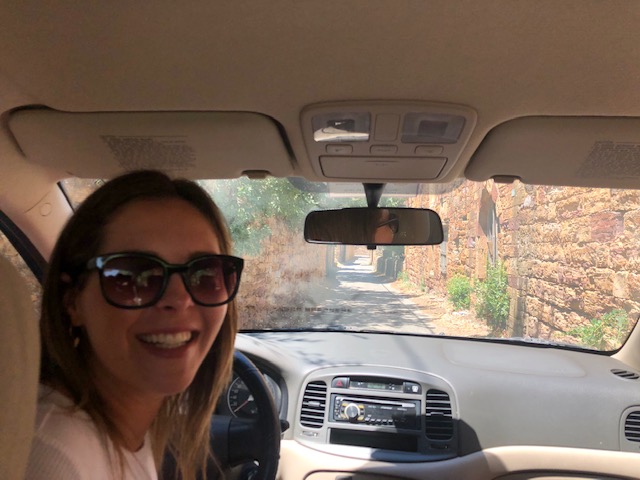
First stop : The Monastery of Nea Moni is one of the oldest monasteries in Greece, located in the center of Chios island. Dating from the 11th century, the monastery was built by the Byzantine Emperor Constantine IX Monomachos and his wife Empress Zoe on the site where three monks found a holy icon.
Until the 17th century, with a population of about 800 monks, the Monastery had accumulated an enormous fortune, mostly in land holdings. During the invasion by the Turks in 1822 the local populace took shelter in the church, reasoning that they would be safe in this holy sanctuary.
Not so, the Turks set fire to the buildings and then massacred those caught seeking shelter. In the small Holy Cross Chapel, just inside the main gates, there is a glass display case with the remains (bones and skulls) of the men, women and children. A very sobering place. Nea Moni is particularly famous for its frescoes on the walls of the churches that are many centuries old and in 1990 was included in the Unesco World Heritage monuments list.
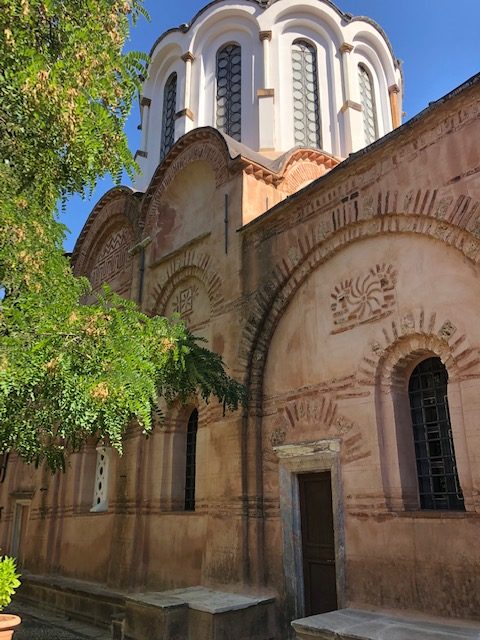
Exterior of church 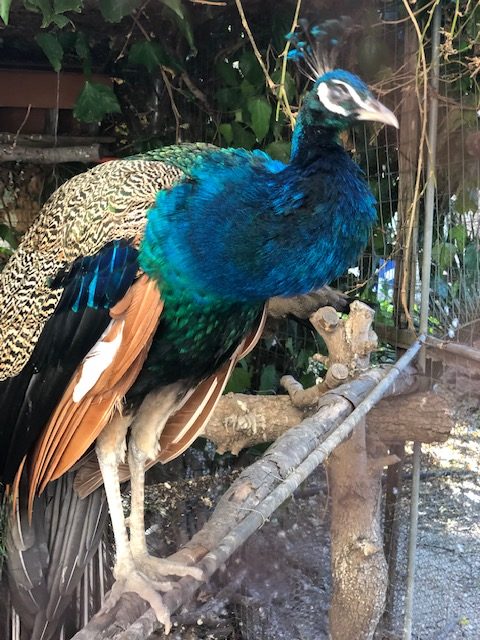
Peacocks in the grounds
We had never heard of Mastic before coming to Chios. The tree is very difficult to cultivate and only grows on the southern facing slopes in southern Chios. The bark is cut (nicked) and the precious resin drips in teardrop shapes and falls to the ground which is covered in lime and then harvested. Locals say if a tree is replanted on the north ’it won’t cry’. Mastic gum is about 20 euro per 100 grams and is used in many products – as gum, aroma and flavour in pastry making and also in the production of the famous mastic liquor. Mastic oil is also used in furniture and musical instruments industry.

Lime spread under trees to catch and keep the gum clean 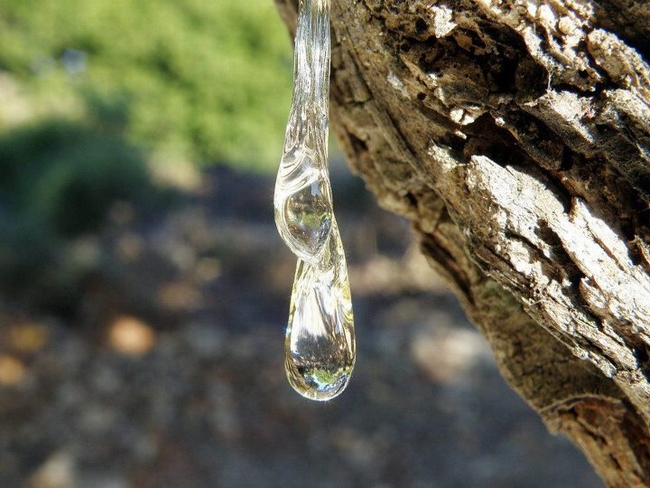
This tree is crying
Our next stop was the village of Pyrgi where the houses are jammed together and the walls are covered with geometric designs called ksista. The greyand white geometrical designs throughout the village are quite unique and were, so we are told, designed to confuse pirates trying to find the mastic warehouses to steal the precious gum. There were many picturesque streets and varied facades and doorways which invited one to keep searching throughout the narrow streets. We finished off in the central square with ice cream under the trees in the sweltering heat. Yum.
Anavatos village is a deserted village located 19km west of Chios Town. It was built on top of a hill, at an altitude of 450 meters above the sea with steep rock. It is believed that this medieval settlement was founded for military purposes, particularly for the surveillance of the west coast of Chios. The village was abandoned after the catastrophic earthquake of 1881 and today it is a national monument. It is in every sense of the word, a ruin. There was a warning sign before we went up but apart from that, no other attempts at safety signage or barriers.

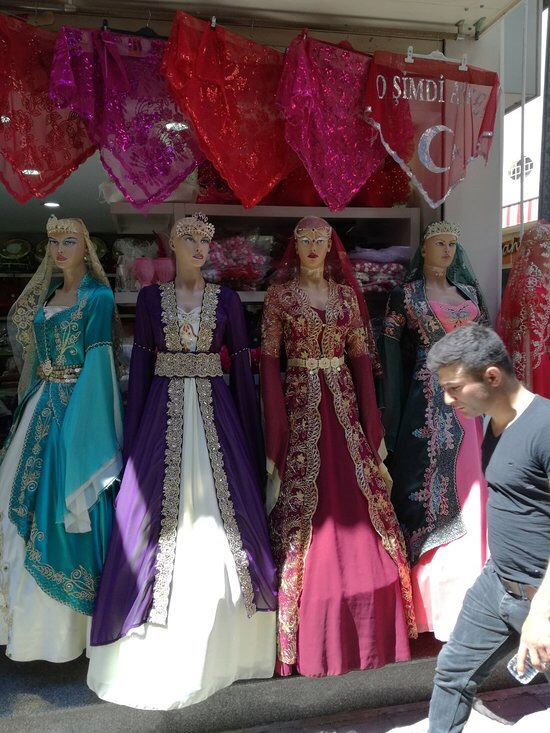

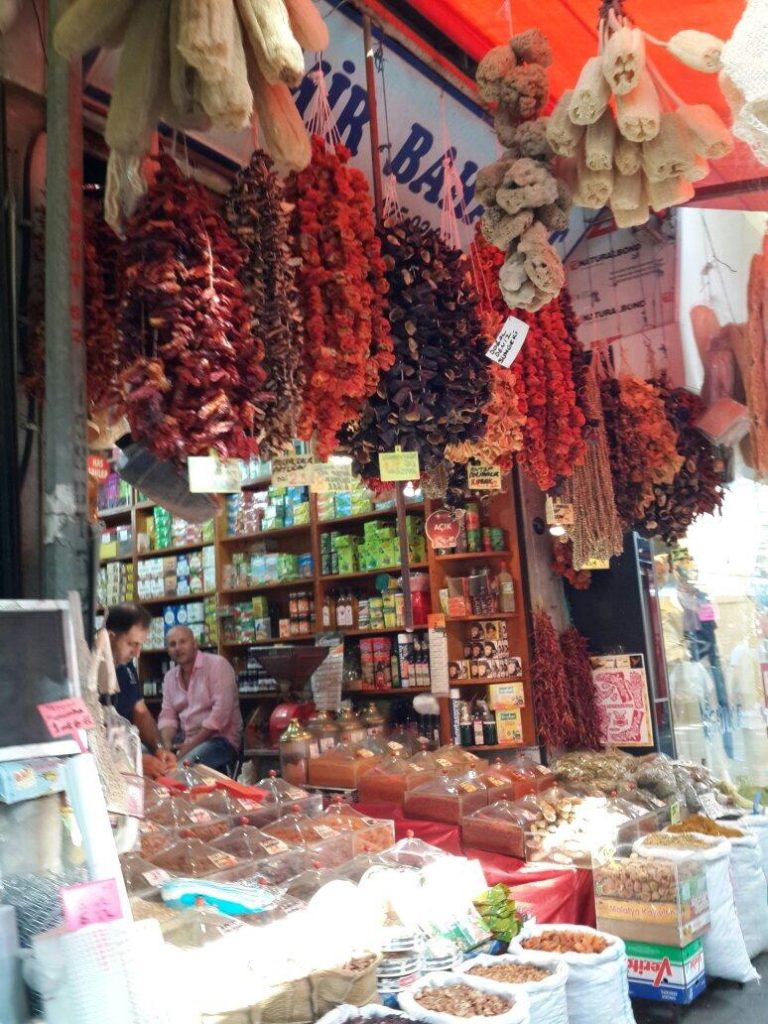


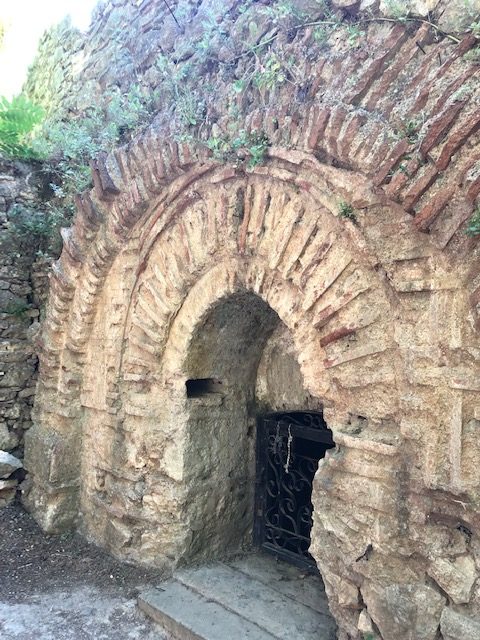
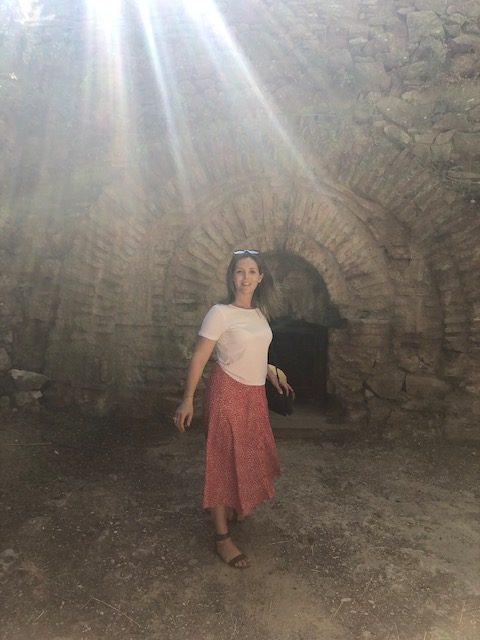
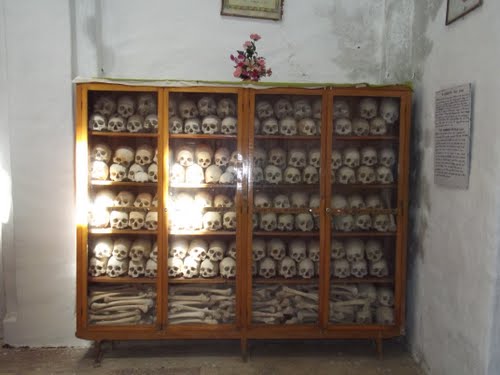
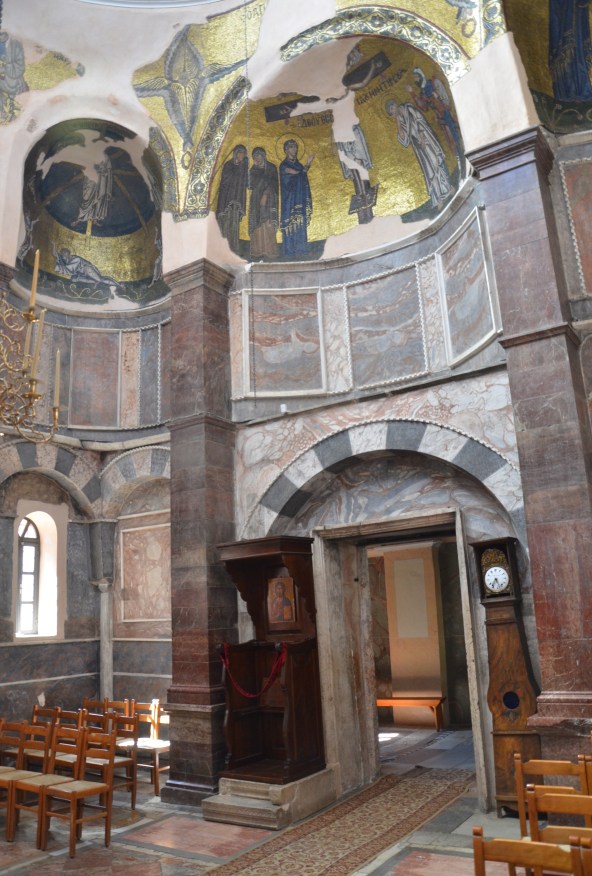
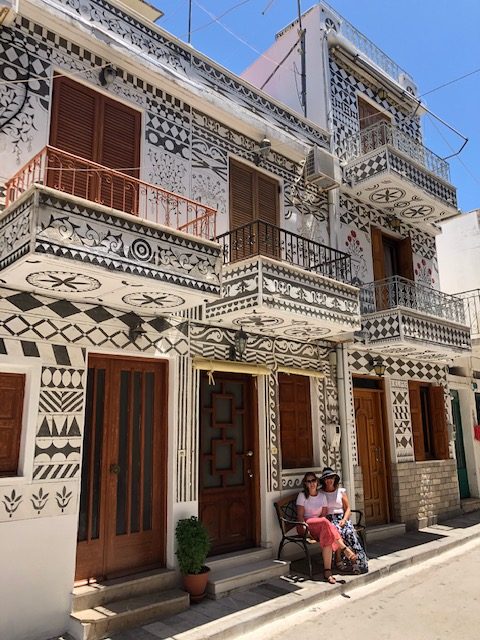
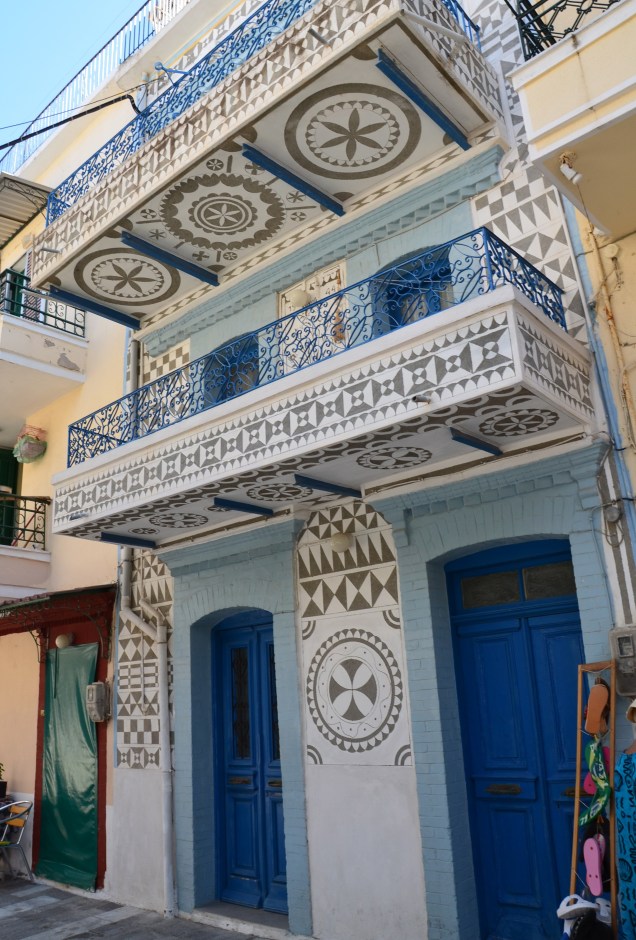
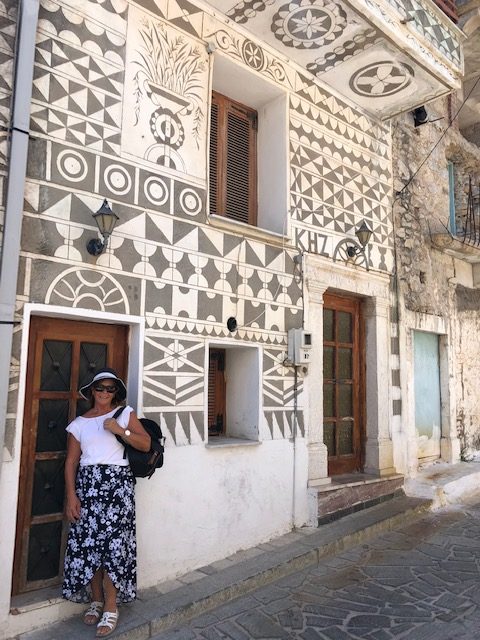
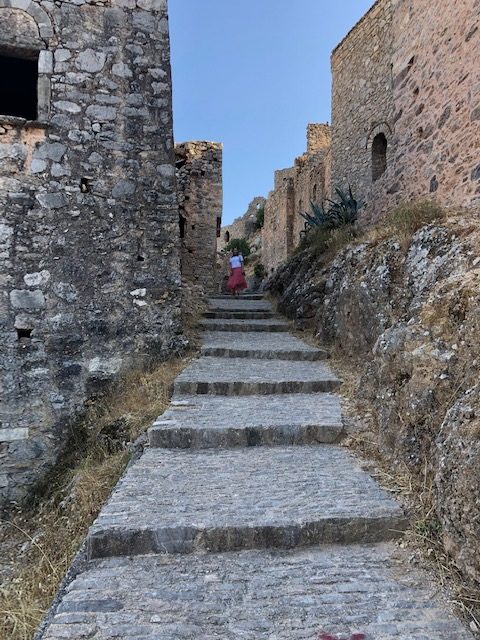
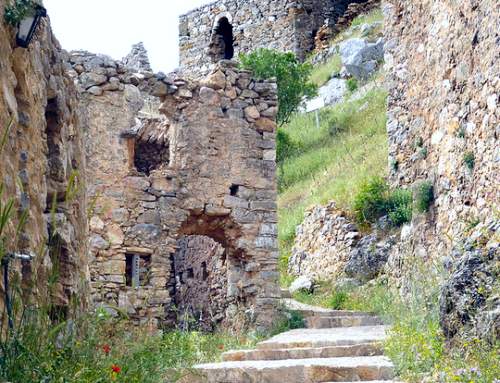
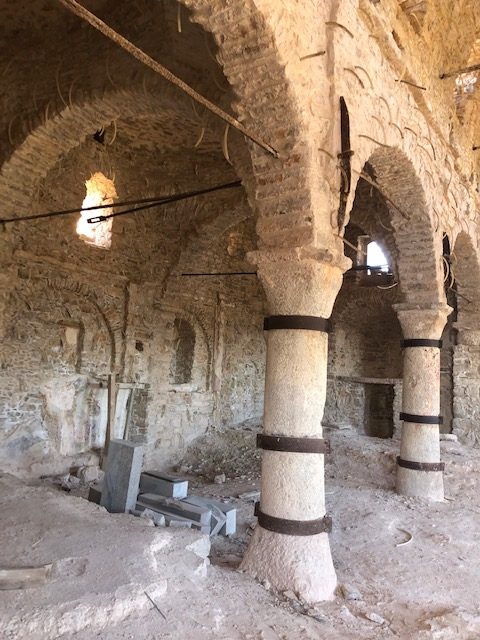

1 comment